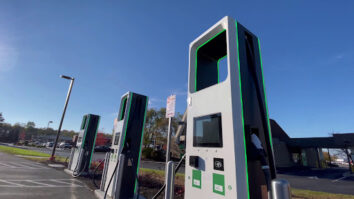On Friday, March 27, 2020, President Trump signed the $2.2 trillion spending bill, the Coronavirus Aid, Relief, and Economic Security Act (CARES Act), into law, immediately following its passing in the House.
Among other areas of economic relief included in the CARES Act legislation, certain businesses will be able to benefit from the Paycheck Protection Program (PPP). This portion of the CARES Act was designed to help small businesses weather the immediate impacts of the COVID-19 crisis and retain their employees by expanding the benefits offered under the SBA 7(a) Loan Program. These loans are now backed by $349 billion in new lending capacity and have a government guarantee of 100% through December 31, 2020.
Eligibility
The CARES Act opens up the loan eligibility under the SBA 7(a) Loan Program to small businesses, nonprofits, Tribal business concerns, and veteran’s organizations with 500 or fewer employees during the covered loan period of February 15, 2020, through December 31, 2020. In order to qualify, businesses must retain their employees and payroll levels during the covered period, February 15, 2020, through June 30, 2020.
Businesses with more than one physical location, with no more than 500 employees per location, may also be eligible. And for businesses with more than 500 employees, there are SBA size standards by industry that may still include such businesses among those eligible for loans. Eligibility has also been expanded to include sole-proprietors, self-employed individuals, and contract workers.
There is no collateral required, nor do you have to make a personal guarantee. Additional requirements to receive a loan include a certification of Good Faith, stating that your needs are the results of COVID-19, and your business must not be receiving any other form of SBA aid or funding already. There is, however, an exception. Businesses already receiving aid through an Economic Injury Disaster Loan (EIDL) are still eligible to apply for assistance through the Paycheck Protection Program.
Loan Availability
Loans will soon be available through existing SBA certified lenders, which also include banks and credit unions. We expect the SBA to issue more information on this program this week. The Act also allows lenders to bypass certain traditional SBA requirements in determining a borrower’s eligibility and creditworthiness to expedite the assistance process. Lenders will determine loan eligibility based on the same terms of eligibility mentioned above, rather than basing eligibility on a business’s ability to repay the loan.
Maximum Amount & Approved Uses of Loans
The loan available is the lesser of 2.5 times your average monthly payments for payroll costs, as defined by the Act, incurred during the 1-year period before the date on which the loan is made, or $10,000,000, whichever is less. New businesses are still eligible, but the measurement period used for average payroll is January 1, 2020, to February 29, 2020.
The SBA Express Loan maximum amount has temporarily increased with the CARES Act legislation. Rather than $350,000, the maximum amount is $1 million through December 31, 2020.
The PPP loans can be used for payroll costs, including health care benefits like paid sick, medical, or family leave, as well as insurance premiums. Loans may also be used for mortgage interest, rent, utilities, and for interest on other debt obligations your business incurred prior to February 15, 2020.
Loan Forgiveness
The portion of the SBA 7(a) loans used for payroll costs and other expenses defined in the Act are eligible for forgiveness. The forgiven amount is potentially 100% tax-free, assuming certain employee retention and compensation benchmarks are met. Any decrease in these benchmarks results in a proportionate decrease of the amount of the loan eligible for forgiveness. In order to qualify for forgiveness, the borrower must submit proof they used the loan proceeds for eligible expenses to the lender that originated the loan. Types of proof required are payroll records, canceled checks, and anything else supporting the expense. The amount eligible for forgiveness is measured during the 8-week period after the loan origination.
The employee and compensation benchmarks a borrower must maintain to receive full loan forgiveness are based on your average number of employees and compensation by employee (limited to $100,000 on an annualized basis) for the covered period in 2020 in comparison with the same period in 2019, or January 1, 2020, through February 29, 2020, whichever time period yields the best result. If comparison shows a reduction in average headcount or a reduction in compensation of more than 25% in total salary and wages for the covered period, your forgiveness decreases proportionally by the decrease in headcount or any percentage above 25% for compensation. However, borrowers able to rehire laid-off workers and restore their compensation before June 30, 2020, will not experience a decrease in forgiveness, despite having lower benchmarks at the onset of the covered period.
The Unforgiven Balance
According to the bill, the unforgiven portion of these loans has a maximum 10-year maturity, will continue to be 100% guaranteed by the U.S. Government, and will have terms similar to other SBA loans. Payments, including principal, interest, and fees, may be deferred for no less than 6 months and no more than 1 year. The Department of Treasury issued an information fact sheet indicating the maximum term of the loan is 2 years, with 0.5% interest.
Additional Terms & Benefits
As mentioned above, for tax purposes, canceled loan amounts will not be included in gross income. And additionally, prepayment, as well as both borrower and lender fees are waived on these loans.
Assessing Your Eligibility & Terms
We have included a link to a spreadsheet below. In addition to a summary of the Paycheck Protection Program on the first tab, the second tab of the spreadsheet contains a loan calculation tool. This tool allows your business to estimate the maximum loan amount you are eligible to receive, and helps you determine eligibility for payback forgiveness once your business has accepted a loan.
Download Paycheck Protection Program Calculator
To view different business planning scenarios, enter the applicable data into the input cells – these are the blue cells in the spreadsheet. These cells ask for the variable data that will determine the scope of the loan. Variables include payroll, interest paid on covered mortgages, rent, utilities, amounts for wages under both FMLA and paid sick-leave credits, the number of employees you have receiving over $100,000 per year, and the average number of full-time employee equivalents (FTEs) from February 15th to June 30th for both 2019 and 2020.
The Department of Treasury has added PPP guidance and the PPP application to its website.
ARB is dedicated to updating our clients and community as the legislative implications of the COVID-19 pandemic continue to unfold. For additional information or questions on the Paycheck Protection Program and related matters, contact us today.
by Barton Haag, CPA





